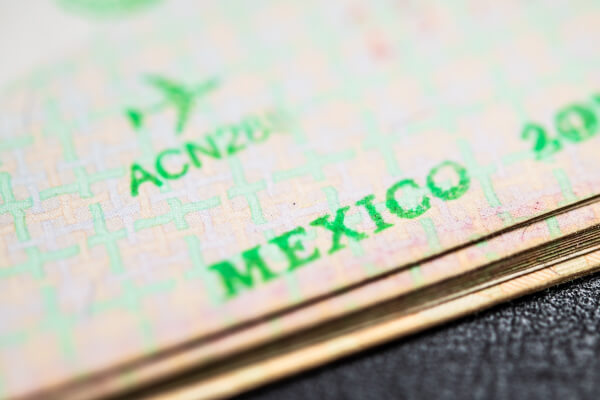Hiring Independent Contractors in Canada: A Complete Guide for Businesses
Learn how to hire independent contractors in Canada. Understand legal rules, tax responsibilities, and how to avoid misclassification with this guide.

Payoneer is a popular provider for business account and card services. Payoneer focuses on freelancers, people selling online, and small business owners, with ways to pay and get paid in USD and select foreign currencies, easy ways to receive customer card payments, and more.
If you’re new to Payoneer this guide is for you. We’ll cover how to use Payoneer to send, receive, request and withdraw funds, as well as use their card feature.
We’ll also introduce a couple of Payoneer alternatives, including Wise Business which has a global account to hold, exchange, spend, send and receive foreign currency payments with mid-market exchange rates and low, transparent fees.
Payoneer was launched in 2005, and offers accounts and cards for freelancers, digital businesses and online sellers. Among the array of services and solutions available are ways to pay suppliers and get paid by customers, PSPs and marketplaces, cards for day to day and overseas use, currency conversion and more. Accounts are available in the US and many countries, and Payoneer already serves millions of customers worldwide.
We’ll walk through how to use Payoneer in more detail in just a moment. First, though, a look at some of the main features you could get with Payoneer2:
Here’s a roundup of some key Payoneer fees - do check the fee schedule carefully for the full details, before signing up.
| Service | Payoneer fees3 |
|---|---|
| Open an account | No fee - a 29.95 USD account dormancy fee applies if you don’t use your account for 12 months |
| Order a card | 29.95 USD annual fee for the first card ordered |
| Spend with your card | No fee to spend select currencies supported by your card Foreign transaction fee up to 3.5% when you don’t hold the right balance |
| ATM use | 3.15 USD for withdrawals 1 USD for balance inquiries |
| Receive a payment | Free to receive payments in some major currencies using local bank details Up to 1% fee to receive USD Receive card payments and PayPal payments for up to 3.99% |
| Send a payment | Up to 3% Some currency payments (eg. USD to the US, GBP to the UK) may have flat fees which come down the more you transact |
| Currency conversion | 0.5% |
| Withdraw to your bank account | Some currency withdrawals (eg. USD to the US, GBP to the UK) may have flat fees which come down the more you transact Up to 3% if currency conversion is required |
*Fee information correct at time of research - 18th September 2024
So - if you’re thinking of Payoneer for your business, what’s next? Here we’ll walk through how to set up an account, and start to transact. Let’s dive right in.
Payoneer services are intended for online sellers, freelancers, SMEs or people working through online marketplaces. Some business types can not be supported, and you’ll need to be 18 or older to get an account.
To sign up simply download the Payoneer app and tap Subscribe. You’ll be walked through the process using on screen prompts, and will need to enter your personal, contact and business information as well as some ID and proof of address.
Exactly what is needed will depend on the type of business you have - including whether and where your business is registered, and the entity type. However, the process is all explained on screen and you can also reach out to the Payoneer support team for advice where needed.
There are several ways to receive payments with Payoneer. If you issue invoices to your customers you can get local account details in various currencies from Payoneer and add these to your invoice for your customer to pay that way. Or, you can use Payoneer to take customer card payments, using payment links and plugins for example.
Finally, if you use marketplaces sites, or if you’re a freelancer getting paid through a platform like Fiverr, you can connect Payoneer to your preferred sites to receive payments directly4. All you’ll need to do is to link your Payoneer account to the marketplace site or platform you’re using, confirm the currency you’re being paid in, and funds can be deposited to Payoneer.
Receiving limits do apply in some cases - including a 15,000 USD limit for payments made by card or echeck.
You can use Payoneer to send a payment to someone else who has a Payoneer account, or to a bank account. Payments can only be made for business purposes, and limits may apply which will be displayed in the app when you set up your transfer5.
To send a payment to another Payoneer customer you only need their email address. To send to a vendor’s bank account you’ll need to enter their banking details, as well as the amount and currency you’re sending. You can then confirm the payment which will usually arrive in 1 or 2 days.
One handy feature from Payoneer is their payment request option6. Here all you need to do is select the Get Paid tab in your account, enter the clients email and the amount you’re expecting to receive. Your client is automatically emailed and offered a selection of ways to pay you. Once the transfer is made, the money is deposited right into your Payoneer account for convenience.
Payoneer lets customers receive payments in various currencies, and then withdraw to bank accounts in 190 countries7. If you want to make a Payoneer withdrawal to your US bank account you’ll need to link your bank to Payoneer, and then schedule a withdrawal. This is done by simply entering the amount to withdraw and confirming the account you want the funds to be moved to. Money is usually deposited in 1 or 2 days.
Eligible customers can apply for a Payoneer card to spend and make withdrawals. Cards are issued on the Mastercard network, and allow you to spend from your Payoneer balance conveniently. There’s an annual card fee, and some transactions, such as ATM use do have costs associated. However, it's often free to spend a balance you hold in your account - including spending in USD, EUR, GBP and CAD.
You can use Payoneer online but the services are also available through the Payoneer app on Apple8 and Android9 phones. This allows you to manage your account, payments, withdrawals, cards and other transactions, on the go. Payoneer’s app scores pretty well on reviews looking at both Apple and Android phones, with millions of downloads already clocked in. On Google Play, Payoneer gets a 4.3 star rating, while over on Apple, it comes in with 4.5 stars out of 5.
Payoneer account holders can apply for working capital to help grow their business10. Eligible customers could get up to 140% of the monthly revenue of their business, with eligibility judged - in part - through the volume of transactions that flow through your Payoneer account.
There are fixed fees for this service, and fees and repayments are deducted from incoming customer payments as they are deposited to your Payoneer account, so there’s no separate billing step to think about.
If you’re an online seller, you can benefit from Payoneer’s checkout11 services to receive customer payments in 120+ currencies, through a selection of payment methods. You’ll be able to use plugins or dedicated payment pages which can be customized to your brand for a seamless checkout experience. Fees apply for this service, with support offered in multiple languages, 24/7,
Payoneer isn’t the only option for your business. Depending on the features that matter to you, you may also want to compare some alternatives like Wise or PayPal.
Wise Business has accounts which can hold and exchange multiple global currencies.
You can use Wise to hold your balance in the currency you receive, or exchange to the currency you need with the mid-market exchange rate 12.
| Signing up to Wise Business allows access to BatchTransfer which you can use to pay multiple invoices in one go. |
|---|
Get started
with Wise Business
PayPal US13 offers merchant accounts which can accept customer card and bank payments in 25 or so currencies. Because PayPal is well known and has a huge user base, it’s a very popular choice, especially for ecommerce businesses. However, fees can be on the high side, particularly for international transactions14.
Fees can be higher for international customer payments, where a 1.5% surcharge applies on top of any domestic fee. Currency conversion also has a fee of 3% or 4% depending on the specific transaction - making PayPal a good Payoneer alternative for businesses trading online mainly in the US.
You can close your Payoneer account by submitting an account close form to Payoneer customer services. Once your account is closed any funds in the account are lost, and the account can not be reopened. You can not open another Payoneer account with the same email address used if you decide to sign up again in future.
You can not usually directly withdraw a balance from Payoneer to PayPal. However, you can withdraw your money from Payoneer to your bank, and then use your balance to top up your PayPal account if you’d like to.
You may be able to withdraw funds from Payoneer to Wise if you connect your local account details from Wise to your Payoneer account. You’ll then be able to withdraw in the currency of the account details, including USD and several other currencies, to manage your money in your Wise account.
Payoneer lets you receive and hold foreign currency payments - you can also switch between currencies easily in your account if you would like to. Simply select the currency conversion option to initiate this, and you’ll be able to see the applicable exchange rate and fee.
Payoneer is a popular provider for businesses in the US which trade online and sell through marketplaces or similar platforms. Use this guide to see if it may fit your own needs - and compare your options with alternatives like Wise Business so you know you’ve got the very best solution out there.
Learn More:
Payoneer vs. Paxum: Which is right for you?
*Please see terms of use and product availability for your region or visit Wise fees and pricing for the most up to date pricing and fee information.
This publication is provided for general information purposes and does not constitute legal, tax or other professional advice from Wise Payments Limited or its subsidiaries and its affiliates, and it is not intended as a substitute for obtaining advice from a financial advisor or any other professional.
We make no representations, warranties or guarantees, whether expressed or implied, that the content in the publication is accurate, complete or up to date.

Learn how to hire independent contractors in Canada. Understand legal rules, tax responsibilities, and how to avoid misclassification with this guide.

Learn how to hire independent contractors in Brazil. Understand tax rules, compliance, contracts, and how to avoid misclassification risks.

Learn how to hire and pay independent contractors in Mexico. This article also includes an FAQ and best practices about working with contractors in Mexico.

Learn how to navigate the overseas worker recruitment. Discover legal requirements, sourcing strategies, visa compliance, and tips for international hiring.

Paying overseas vendors is common, but the hidden costs of B2B cross-border payments aren’t. Learn how to simplify international business payments today.

B2B payment processing doesn’t have to be hard. Learn how growing businesses can simplify cross-border transactions, streamline invoicing and get paid faster.